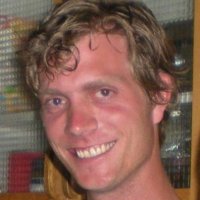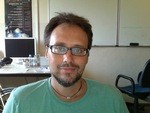UiO Mechanics Seminar Series - Page 5
Reyna Ramirez
Study of the air-flow very close to the surface of wind-generated water waves Marseille large air-water facility
Activity at IFE Wind Energy: numerical modeling of offshore wind turbines
IFE (Institutt for Energiteknikk) is a research center located in Kjeller. The wind group at IFE mainly works with the development and analysis of new cost effective concepts for offshore wind energy, both concerning innovative rotor designs and new concepts for substructures. The group main investigation tool is the in-house software 3DFloat, an aero-elastic code which can simulate the whole wind turbine structure when exposed to the associated environmental loads (wind loads, hydrodynamic loads, soil loads if bottom-fixed).
In the presentation, an insight into the wave kinematics and wave loads modeling tools that are currently included in 3DFloat will be provided.
Bioprocessing of marine and agricultural by-products
Large Eddy Simulation of the interaction of water waves with turbulent air flow
Stereolithography - A Powerful Tool to Create almost Everything
Stereolithography or "SLA" printing is a powerful and widely used 3D printing technology for creating prototypes, models, and fully functional parts for production. This additive manufacturing process works by focusing an ultraviolet (UV) laser onto a vat of liquid resin. Layer by layer formation of a polymeric network allows printing parts that are almost impossible to create with other processes.At Formlabs, a startup that originated out of the MIT Media lab in 2011, we work on all aspects of SLA printing; we develop and manufacture 3D printers, resins, and software. In this talk, I will give a detailed overview of the printer technology, the chemistry of the materials, and how to use SLA for lots of exciting applications.
Microfluidics of sugar transport in plants
Plants can rightly be called masters of microengineering. Their survival and successful reproduction depends on their ability to overcome a series of physical challenges during growth and when transporting matter over great distances. In this talk, we focus on the microfluidic network responsible for energy distribution (the phloem). We combine experiments on living plants and biomimetic microfluidic devices to elucidate the basic physical principles that govern sugar transport in plants. We derive a scaling relation between the characteristic sizes of the plant organs, which optimizes the rate of sugar transport. Comparison with experimental data suggests that the pipe network is operating at or near the theoretical optimum. We further consider the coupling between photosynthesis and long-distance transport. While sap with high sugar concentration has the greatest transport potential, viscosity impedes flow, a phenomena analogous to congestion in traffic flows. The optimal sugar concentration for transport in plants is 25%, sweeter than Coke (10%) but much less viscous than maple syrup (65%). Although plants have generally evolved towards the theoretical optimum, a number of unusually sweet plants exist. This group consists primarily of crop plants such as corn (40%) and potato (50%), sugar junkies of the natural world.
Digital signalbehandling og bildeanalyse, UiO and PGS
The effects of moving rough sea surfaces on seismic data.
Enrico Fermi and the birth of modern nonlinear physics
In the early fifties in Los Alamos E. Fermi in collaboration with J. Pasta and S. Ulam investigated a one dimensional chain of equal masses connected by a weakly nonlinear spring. The key question was related to the understanding of the phenomenon of conduction in solids; in particular they wanted to estimate the time needed to reach a statistical equilibrium state characterized by the equipartition of energy among the Fourier modes. They approached the problem numerically using the MANIAC I computer; however, the system did not thermailize and they observed a recurrence to the initial state (this is known as the FPU-recurrence). This unexpected result has led to the development of the modern nonlinear physics (discovery of solitons and integrability). In this seminar, I will give an historical overview of the subject and present the different approaches that have been proposed in the last 60 years for explaining this paradox. Very recent results on the estimation of the time scale and on the explanation of the mechanism of equipartition will also be discussed.
Experimental investigation of linear stability mechanisms in stratified gas-liquid pipe flow
The evolution of interfacial waves on a stratified air water pipe flow is investigated experimentally. An oscillating plate introduced controlled perturbations at the inlet of the pipe. High speed cameras captured the evolution of these perturbations along the pipe by means of a phase-locked shadowgraphy technique. Thereby, it was possible to measure the temporal and the spatial evolution of the disturbances introduced in the flow. Particle image velocimetry was performed further downstream in order to evaluate changes in the base flow.
A relatively large data bank has been gathered with varying air and water flow rates as well as varying amplitudes and frequencies of the inlet perturbations. Some preliminary results contain a qualitative assessment of linear vs. non-linear regimes and momentum transfer into the water layer.
Zebrafish embryos: a useful tool for the study of nanoparticle behavior in real time in a vertebrate
Potential flow with free boundaries using the level set method. A review of some electro-hydrodynamic applications
PIV investigation of the flow structures developing in a parallel valves Diesel engine cylinder during the intake stroke.
Hydrodynamics and adhesion of soft interfaces
Mathematical Institute, University of Oxford
The Lattice Boltzmann Method and its application in modeling of physiological flows
Victor Haughton, Professor of Radiology at the University of Wisconsin
and Adjunct Research Scientist at Simula Research Laboratory
Three-dimensional instability of solitary water waves
Flow induced vibration (FIV) is a recent discipline in Flow Assurance which focuses on the piping and equipment vibrations caused by the internal flow of gas, oil and/or water in subsea production systems (SPS). Those vibrations may cause fatigue failure at weak spots in the piping such as welds and tees. Due to recent incidents and ever-increasing production rates and velocities, FIV is now considered as a major limiting factor in the design and operation of SPS. Based on real cases and ongoing projects, this presentation provides an introduction to the following aspects: fluid-structure interaction mechanism, fatigue mechanism, design requirements for SPS, analysis tools and vibration monitoring techniques.
Muligheter for samarbeid med DHI innen forskning, PhD og master-prosjekter.



